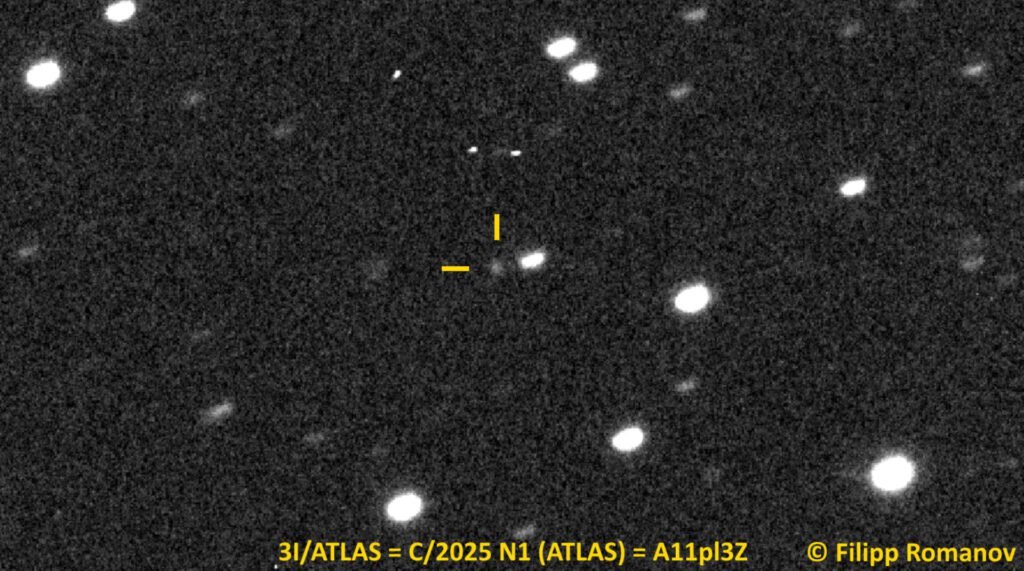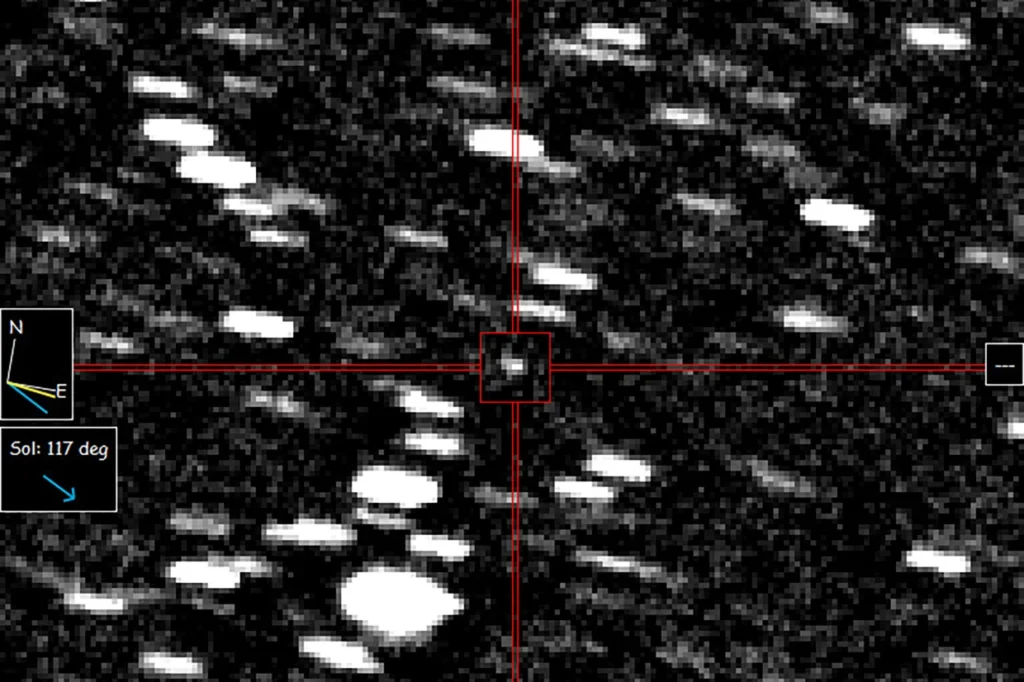In an extraordinary achievement for space science, a UAE observatory has successfully captured images of the rare interstellar comet 3I/ATLAS, marking a major milestone not only for the region but also for global astronomy. This comet is only the third interstellar object ever discovered passing through our solar system, making this a truly historic event.
This article will explore what makes interstellar comet 3I/ATLAS so special, why this discovery is important, and how it positions the UAE as a significant player in the world of space exploration.
What Is an Interstellar Comet?
Before we dive into the story, let’s understand what an interstellar comet actually is. Most comets that we know of originate within our solar system, generally from two major regions — the Kuiper Belt and the Oort Cloud. However, an interstellar comet comes from beyond our solar system, originating from a different star system altogether.

These visitors offer a rare and exciting chance to study material that formed around other stars. When such an object passes close enough to our Sun, it becomes active, forming a bright coma and sometimes a tail, allowing scientists to analyze its composition.
The Story of 3I/ATLAS

The interstellar comet 3I/ATLAS (the “3I” stands for “third interstellar”) was first spotted by the Asteroid Terrestrial-impact Last Alert System (ATLAS) in late 2024. Its unusual hyperbolic orbit immediately caught the attention of astronomers around the world. Unlike most solar system objects, which follow elliptical orbits around the Sun, 3I/ATLAS’s orbit suggested it was simply passing through — a visitor from another star system.

After its initial discovery, observatories worldwide rushed to track and study this comet. Among these, a UAE observatory played a crucial role by capturing high-resolution images and data, adding invaluable information to our understanding of this cosmic wanderer.
Why Is 3I/ATLAS So Important?
A Messenger from Another Star
Interstellar comet 3I/ATLAS is like a messenger bringing secrets from beyond our solar system. It carries ancient material formed around a distant star, potentially billions of years ago. By studying it, scientists hope to answer key questions about the formation of other planetary systems.
Only the Third Ever Discovered
To put this in perspective, 3I/ATLAS is only the third confirmed interstellar object. The first was ‘Oumuamua in 2017, followed by comet 2I/Borisov in 2019. Each discovery has provided groundbreaking insights, but interstellar comets are especially valuable because their gaseous comas allow us to analyze their composition more easily than rocky objects.
Scientific Opportunities
By studying 3I/ATLAS, researchers can:
- Compare it to solar system comets.
- Understand differences in chemical makeup.
- Learn about the dynamics of other star systems.
- Improve models for how planetary systems form and evolve.
UAE’s Role in Capturing 3I/ATLAS
UAE’s Growing Space Ambitions
In recent years, the UAE has made headlines for its ambitious space initiatives, including the successful Mars mission “Hope Probe” and plans for lunar exploration. The observation of interstellar comet 3I/ATLAS adds another remarkable achievement to this growing list.
Cutting-Edge Equipment
The UAE observatory used advanced telescopes equipped with high-resolution imaging and spectroscopic tools. These technologies allowed scientists to capture the coma and tail structures of 3I/ATLAS in stunning detail.
International Collaboration
The observation was not done in isolation. UAE scientists collaborated with astronomers from Europe, Asia, and North America, showcasing the global nature of space science. This effort positions the UAE as an emerging leader in astronomical research and a valuable contributor to the global scientific community.
What Have We Learned So Far?
Unique Chemical Composition
Preliminary studies of 3I/ATLAS suggest a unique chemical composition that differs from typical solar system comets. For example, it has lower levels of certain carbon-based compounds and a different dust-to-gas ratio.
Orbit and Speed
3I/ATLAS is traveling at a velocity of around 30 kilometers per second relative to the Sun. Its hyperbolic trajectory confirms that it is not gravitationally bound to our solar system, meaning it will continue on its journey after passing close to the Sun.
Potential for Future Visits
While it is extremely rare, the detection of three interstellar objects in recent years suggests that more may pass through our neighborhood than previously thought. Improved observation technology and increased sky monitoring are making these discoveries possible.
The Science Behind Tracking an Interstellar Comet
Identifying the Visitor
When a comet like 3I/ATLAS is first spotted, astronomers quickly analyze its orbit. A hyperbolic orbit (one that does not close into an ellipse) is a strong clue that it comes from interstellar space.
Observing the Coma and Tail
As the comet approaches the Sun, its ice and dust begin to sublimate, forming a coma (the bright cloud around its nucleus) and a tail. These features are studied using both visual and infrared telescopes to understand their composition.
Data Collection
Data on brightness, chemical signatures, and motion are collected and shared globally. This collaborative approach ensures that no piece of valuable data is missed during the comet’s short visit.
Why Should We Care About Interstellar Visitors?
New Clues to Our Origins
By analyzing objects like 3I/ATLAS, we can learn about the building blocks of distant star systems. This can tell us whether the materials that led to life on Earth are common elsewhere in the galaxy.
Advancing Space Technology
Tracking and studying fast-moving interstellar objects pushes our technological and scientific capabilities to new levels. This prepares us for future missions, possibly even to capture or sample such visitors directly.
Inspiring Future Generations
Events like this ignite public interest and inspire young people to pursue careers in science and engineering. They remind us of our shared curiosity and drive to explore the unknown.

What’s Next for 3I/ATLAS?
Final Observations
As 3I/ATLAS continues its journey, it will become fainter and harder to track. However, astronomers will continue observing it as long as possible to gather more data.
Sharing the Data
All the information collected will be made available to the international scientific community. This ensures that researchers worldwide can contribute to and benefit from this rare encounter.
Possible Future Missions
While no mission is currently planned to intercept an interstellar comet, proposals exist for future spacecraft capable of rapid response. One such concept, known as the “Comet Interceptor,” is being developed by the European Space Agency.
UAE’s Vision for the Future
The UAE’s successful observation of interstellar comet 3I/ATLAS highlights its commitment to advancing space science and contributing to global discoveries. The country’s leaders have repeatedly emphasized their vision to transform the UAE into a knowledge-based economy with a strong focus on innovation and scientific research.
By investing in cutting-edge observatories, advanced technology, and international collaborations, the UAE is carving out a place for itself among the world’s leading space-faring nations. This achievement is not just about astronomy; it reflects the country’s broader ambitions to inspire future generations and become a hub for scientific excellence.
Conclusion
The capture of interstellar comet 3I/ATLAS by a UAE observatory is a momentous event, marking only the third time humanity has had a chance to study an object from another star system. It underscores the UAE’s growing capabilities in space science and highlights the global importance of cooperation in exploring the cosmos.
As we continue to look up at the night sky, discoveries like this remind us that we are part of a much larger universe — full of mysteries waiting to be uncovered. The study of interstellar visitors offers a unique opportunity to connect with worlds beyond our own and to understand the cosmic story of how we came to be.
Whether you are a seasoned astronomer or someone simply fascinated by the stars, the story of 3I/ATLAS is a powerful reminder of humanity’s unending quest to explore, learn, and grow. It invites us to dream big and look beyond our own world toward the vast possibilities that lie among the stars.
Follow us on instagram: UAE STORIES
Read More: UAE Summer Temperatures Soar Above 50°C As Dry Winds Hit














